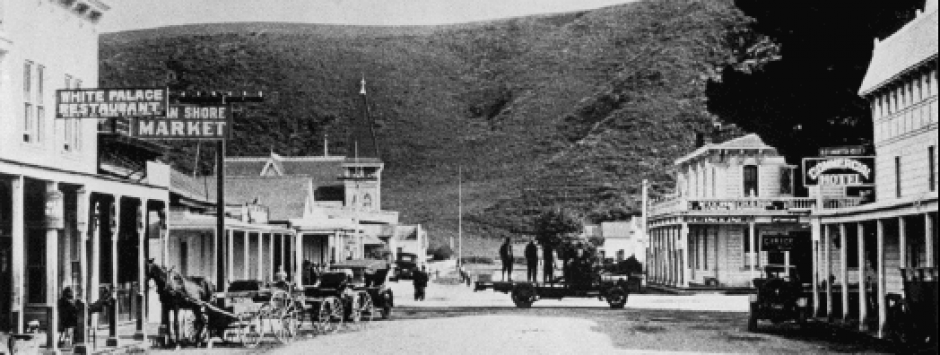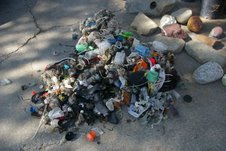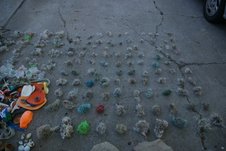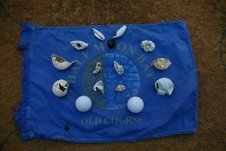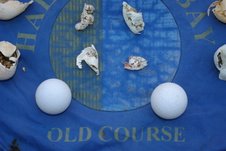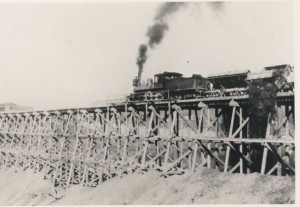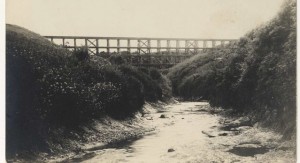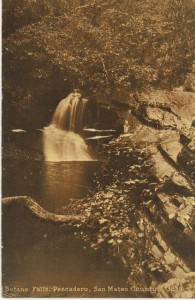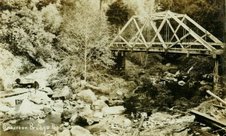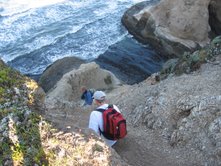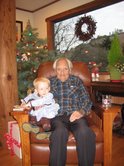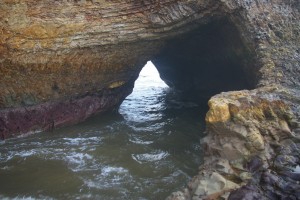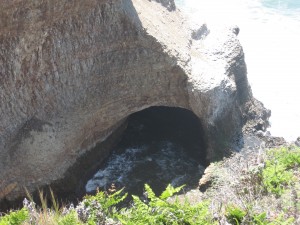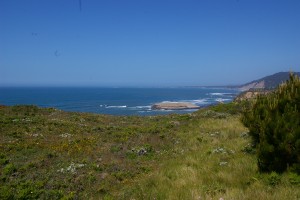By June Morrall
In the 1870s, the “burg” was booming. That’s what some folks called Pescadero, “the burg. It was hopeful talk of a railroad linking Pescadero with San Francisco that led to all the building. Why was this so important at that moment in time?
If you read Angelo Mithos‘s enlightening post below (“What You Didn’t Know About the Ocean Shore & The Butano), you’ll see that the city of San Francisco, post Gold Rush, was developing rapidly and hungry for wood to quickly build more houses. “The Butano’ forest, thick with redwood trees, was so close, yet so far because there weren’t any good roads.* Talk of building an iron road along the Coastside raised many new possibilities.
The people behind the new railroad held community meetings in Pescadero to discuss the project, but they were in town mainly to raise the funds to build it. Meanwhile the locals got to work, drawing up plans for new buildings.
The two-story, $31,000 McCormick building was under construction, said to be a big “attraction on the road.” On the first floor there was a warehouse; on the second floor a public hall with a suspended platform where musicians performed.
On San Gregorio Street (Stage Rd) there were two blacksmith shops; Goulson repaired wagons and Koster specialized in shoeing. There was a market, a harness shop, barber, two livery stables, an express, telegraph and post office.
There were three saloons in the village with a population of 300. Teetotalers were free to join the Temperance Society headquartered in the Methodist Church.
In 1874 instead of being a town built on two sides of a creek as it had been, Pescadero now presented a four-cornered front.
That year Library Association members celebrated their 8th anniversary, proclaiming that theirs was the oldest library on the entire Coastside. [Remember, there was always a humorous rivalry with Spanishtown [Half Moon Bay], the bossy town to the north.]
Education remained high on the list of priorities with a brand new two-story, four-room schoolhouse ready to go from the drafting table to reality. There was also a private school, with a waiting list, operated by a Mrs. Hollingsead.
Six miles east of the village, shingle mills, destroyed by a series of destructive fires, were being rebuilt.
Robert Doherty, “the prince of landlords,” pulled his money out of Purisima where he owned a hotel, and moved a few miles south to Pescadero looking for another financial opportunity. There was a place called the Lincoln Hotel up for sale. Doherty, and his wife, “the queen of cuisine,” bought it for $6000, redecorated, and renamed it the Pescadero House, going into fierce competition with Charles and Sarah of the immensely popular Swanton House.
But there was yet more competition–the Sulphur Springs Hotel, owned by San Francisco businessmen, stood a couple of miles east of the town’s famous flag pole on the site of a medicinal spring. The Pescadero and Swanton House and the Sulphur Springs Hotel awaited the steady flow of guests they felt certain would come if the railroad was built.
Green grass covered the hills and fields of potatoes surrounded the busy village. There were rumors that big landowner Loren Coburn was going to build a boom at the mouth of Pescadero Creek to catch the stray logs from the nearby redwood forests. You couldn’t live in Pescadero without hearing Coburn’s name. A man named Wilson rented 1600 acres from Loren. The 1700-acre Cloverdale Dairy, where 100 cows were milked for cheese and butter, was also rented from Coburn.
Up until this time few people had ever actually seen Loren Coburn.
—————-
*There were many other “wood” forests much closer than The Butano. I am referring to the forests just south of Half Moon Bay, where in the 1870s, sawmills had been set up. The fast-growing city of San Francisco also needed fresh produce from the Coastside, including the popular potato, a basic food.
